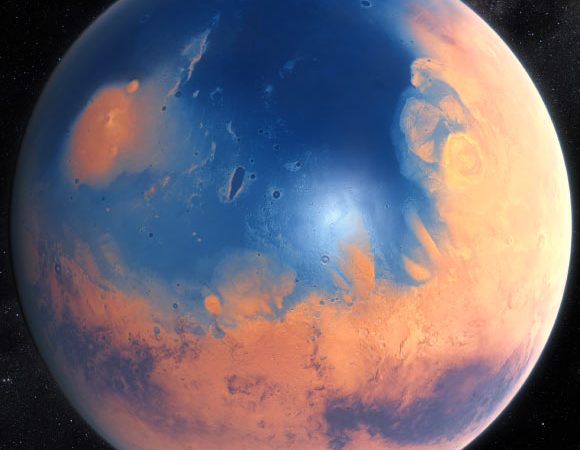According to a new study published in the journal Science Advances, the Martian subsurface would have been the most habitable region for simple life forms on the planet, likely due to underground melting of thick ice sheets fueled by geothermal heat.
Source: Sci News
The Sun is a massive nuclear fusion reactor that generates energy by fusing hydrogen into helium.
Over time, our star has gradually brightened and warmed the surface of planets in the Solar System.
About 4 billion years ago, the Sun was much fainter so the climate of early Mars should have been freezing.
However, the Martian surface has many geological indicators (e.g. ancient riverbeds) and chemical indicators (e.g. water-related minerals) that suggest the planet had abundant liquid water during the Noachian period, about 4.1 billion to 3.7 billion years ago.
This apparent contradiction between the geological record and climate models is the faint young Sun paradox.
On rocky planets like Mars, Earth, Venus and Mercury, heat-producing elements like uranium, thorium and potassium generate heat via radioactive decay.
In such a scenario, liquid water can be generated through melting at the bottom of thick ice sheets, even if the Sun was fainter than now.
On Earth, for example, geothermal heat forms subglacial lakes in areas of the West Antarctic ice sheet, Greenland and the Canadian Arctic.
It’s likely that similar melting may help explain the presence of liquid water on cold, freezing Mars 4 billion years ago.
“Even if greenhouse gases like carbon dioxide and water vapor are pumped into the early Martian atmosphere in computer simulations, climate models still struggle to support a long-term warm and wet Mars,” said Dr. Lujendra Ojha, a researcher at Rutgers University-New Brunswick.
“We propose that the faint young Sun paradox may be reconciled, at least partly, if Mars had high geothermal heat in its past.”
Dr. Ojha and his colleagues from Dartmouth College, Louisiana State University and Planetary Science Institute examined various Mars datasets to see if heating via geothermal heat would have been possible in the Noachian period.
They showed that the conditions needed for subsurface melting would have been ubiquitous on ancient Mars.
Even if Mars had a warm and wet climate 4 billion years ago, with the loss of the magnetic field, atmospheric thinning and subsequent drop in global temperatures over time, liquid water may have been stable only at great depths.
Therefore, life, if it ever originated on Mars, may have followed liquid water to progressively greater depths.
“At such depths, life could have been sustained by hydrothermal (heating) activity and rock-water reactions,” Dr. Ojhasaid.
“So, the subsurface may represent the longest-lived habitable environment on Mars.”
Source: Sci News

































Leave a Comment
You must be logged in to post a comment.